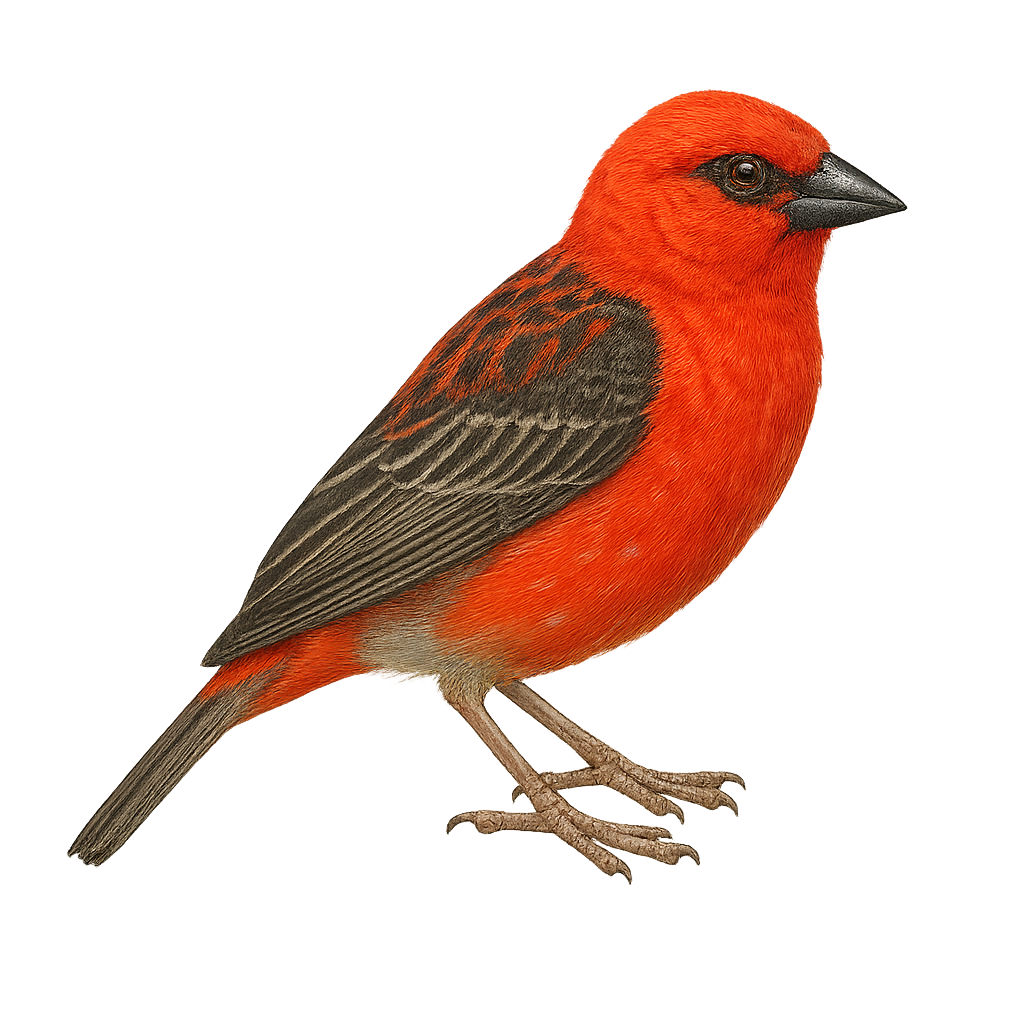Your wildlife photography guide.
Explore the forest fody in detail, study its behavior, prepare your shots.
Where to observe and photograph the forest fody in the wild
Learn where and when to spot the forest fody in the wild, how to identify the species based on distinctive features, and what natural environments it inhabits. The WildlifePhotographer app offers tailored photography tips that reflect the forest fody’s behavior, helping you capture better wildlife images. Explore the full species profile for key information including description, habitat, active periods, and approach techniques.
Forest Fody
Scientific name: Foudia omissa

IUCN Status: Least Concern
Family: PLOCEIDAE
Group: Birds
Sensitivity to human approach: Suspicious
Minimum approach distance: 10 m
Courtship display: October to November
Incubation: 11-13 jours
Hatchings: October to December
Habitat:
Humid forests, savannas, agricultural areas
Activity period :
Primarily active during the day, with peak activity in the morning and late afternoon.
Identification and description:
The Forest Fody, or Foudia omissa, is a small bird endemic to Madagascar. It is primarily recognizable by its bright red plumage in males, while females display more subdued shades of brown and gray. This passerine is mainly found in the island's humid forests, where it feeds on seeds, insects, and small fruits. The Forest Fody is a sociable bird, often seen in small groups. Its breeding season coincides with the rainy season, providing an abundance of food for the young. Although relatively common, deforestation poses a threat to its natural habitat.
Recommended lens:
300 mm – adjust based on distance, desired framing (portrait or habitat), and approach conditions.
Photography tips:
To photograph the Forest Fody, focus on humid forests where it is most active. Use a telephoto lens of 300 mm or more to capture precise details of its colorful plumage. Be patient and discreet, as this bird can be suspicious. Early morning hours are ideal for soft lighting and observing its natural behavior. Avoid sudden movements to prevent scaring it and use a tripod to stabilize your camera.
The WildlifePhotographer App is coming soon!
Be the first to explore the best nature spots, track rutting seasons, log your observations, and observe more wildlife.
Already 1 439 wildlife lovers subscribed worldwide

